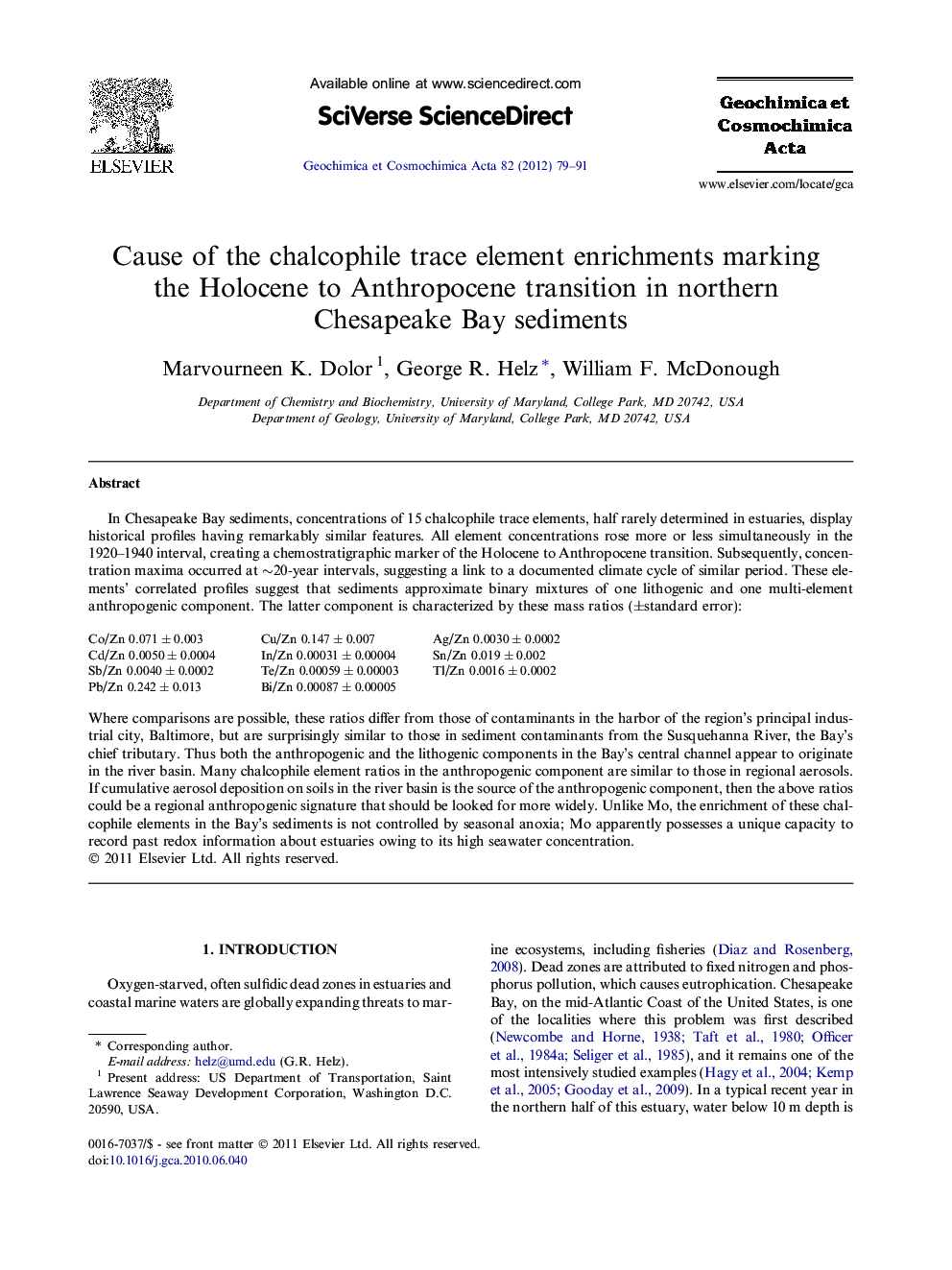| کد مقاله | کد نشریه | سال انتشار | مقاله انگلیسی | نسخه تمام متن |
|---|---|---|---|---|
| 4702815 | 1638075 | 2012 | 13 صفحه PDF | دانلود رایگان |

In Chesapeake Bay sediments, concentrations of 15 chalcophile trace elements, half rarely determined in estuaries, display historical profiles having remarkably similar features. All element concentrations rose more or less simultaneously in the 1920–1940 interval, creating a chemostratigraphic marker of the Holocene to Anthropocene transition. Subsequently, concentration maxima occurred at ∼20-year intervals, suggesting a link to a documented climate cycle of similar period. These elements’ correlated profiles suggest that sediments approximate binary mixtures of one lithogenic and one multi-element anthropogenic component. The latter component is characterized by these mass ratios (±standard error):Co/Zn 0.071 ± 0.003Cu/Zn 0.147 ± 0.007Ag/Zn 0.0030 ± 0.0002Cd/Zn 0.0050 ± 0.0004In/Zn 0.00031 ± 0.00004Sn/Zn 0.019 ± 0.002Sb/Zn 0.0040 ± 0.0002Te/Zn 0.00059 ± 0.00003Tl/Zn 0.0016 ± 0.0002Pb/Zn 0.242 ± 0.013Bi/Zn 0.00087 ± 0.00005Full-size tableTable optionsView in workspaceDownload as CSVWhere comparisons are possible, these ratios differ from those of contaminants in the harbor of the region’s principal industrial city, Baltimore, but are surprisingly similar to those in sediment contaminants from the Susquehanna River, the Bay’s chief tributary. Thus both the anthropogenic and the lithogenic components in the Bay’s central channel appear to originate in the river basin. Many chalcophile element ratios in the anthropogenic component are similar to those in regional aerosols. If cumulative aerosol deposition on soils in the river basin is the source of the anthropogenic component, then the above ratios could be a regional anthropogenic signature that should be looked for more widely. Unlike Mo, the enrichment of these chalcophile elements in the Bay’s sediments is not controlled by seasonal anoxia; Mo apparently possesses a unique capacity to record past redox information about estuaries owing to its high seawater concentration.
Journal: Geochimica et Cosmochimica Acta - Volume 82, 1 April 2012, Pages 79–91